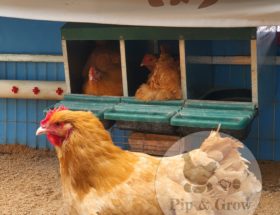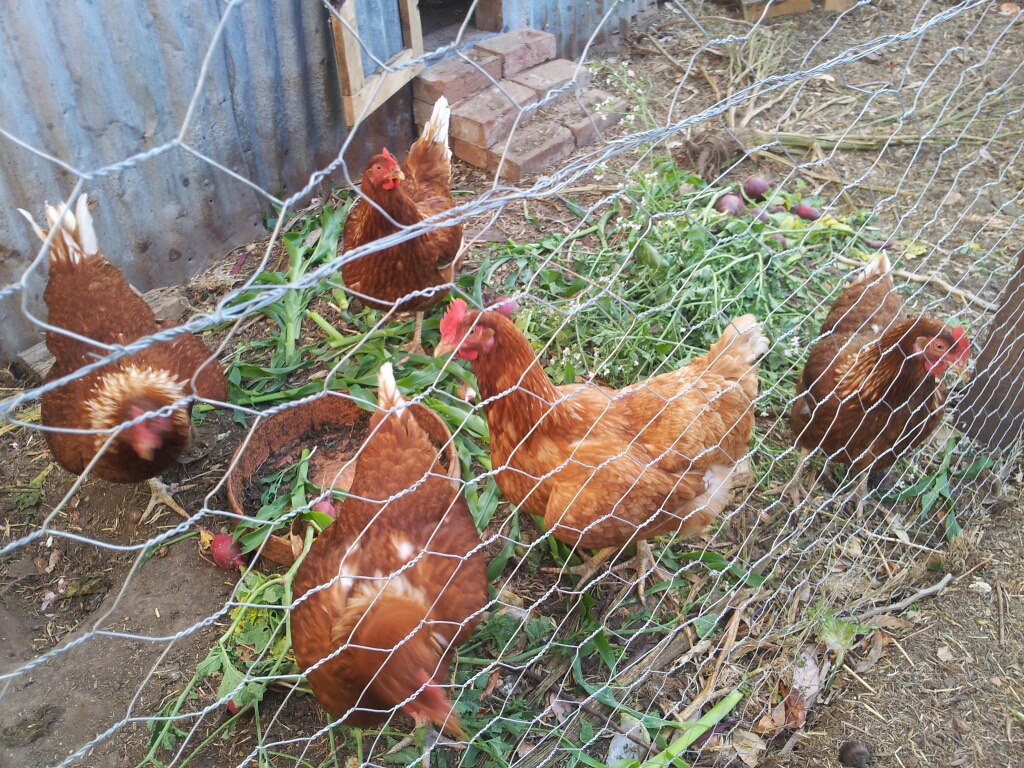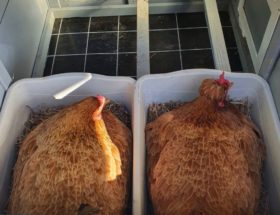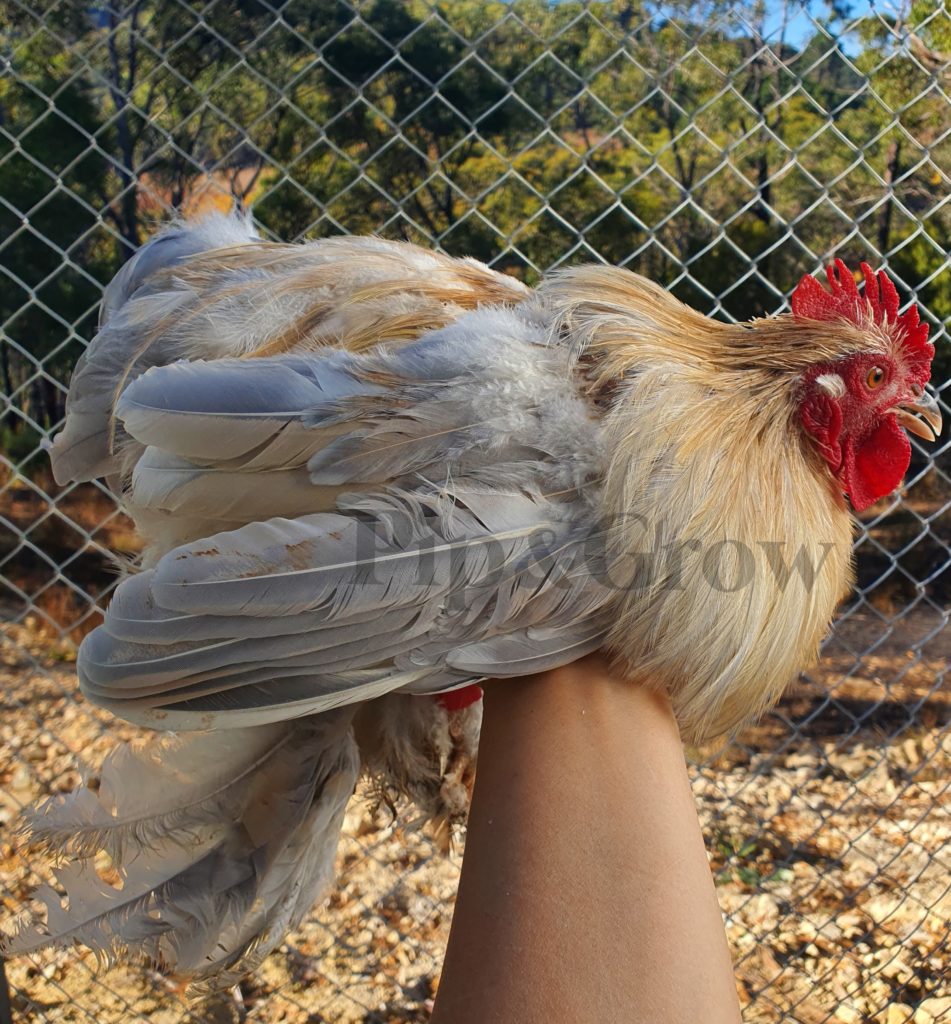
Tale of a Porcelain Pekin Boy
Everything seemed ordinary when this chick hatched. His initial feathers grew in seamlessly, indistinguishable from others, until he reached around 14 weeks of age. It was then that the trouble began – “wing patches” emerged as the next set of feathers began to come in. Despite the growth of pin feathers, they failed to develop further, breaking off prematurely. While we had heard of issues with lavender/Porcelain feathered chickens, we had never personally witnessed nor experienced a case quite like this, so the connection didn’t immediately click. Initially, we suspected pecking from other birds and took measures like providing saddles and allowing time for regrowth. However, after several weeks passed with no improvement by the time he reached 22 weeks of age, we realized something else was wrong.
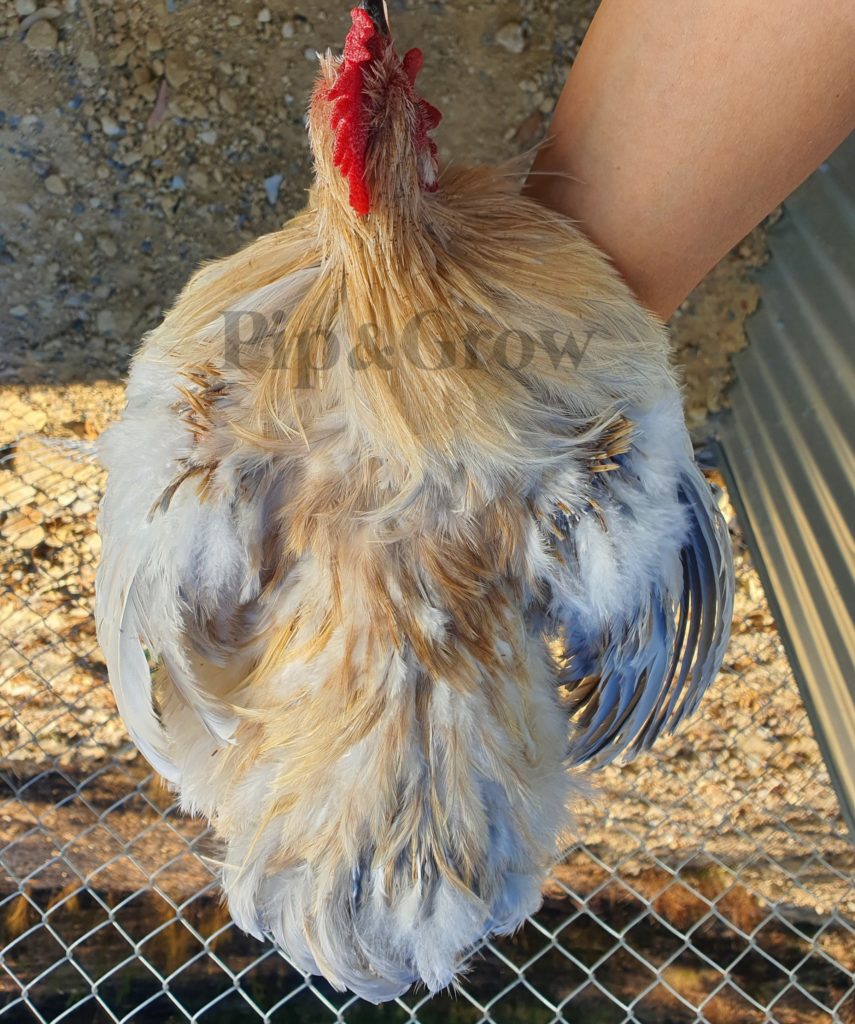
Why
Without delving too deeply into the genetics, it’s widely known that Lavender/Porcelain feathers are associated with a feather shredding gene. Additionally, his distinctly “Orange” appearance contradicted typical porcelain traits, indicating further genetic anomalies. This specific type of feather fault is exclusive to males; females may carry the genetic mutation but outwardly appear normal. Once these brittle “wing patches” infiltrate a bloodline, they become notoriously challenging to eliminate, potentially jeopardizing the entire breeding line, as our research has shown.
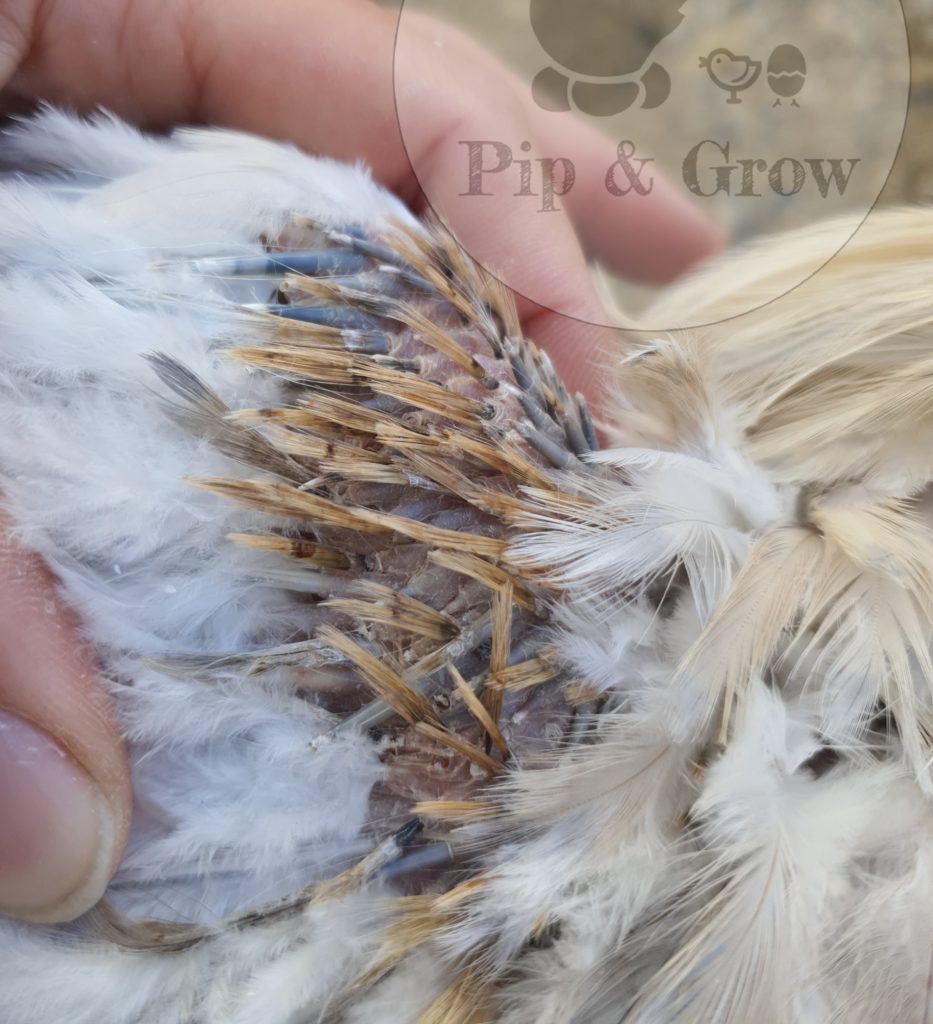
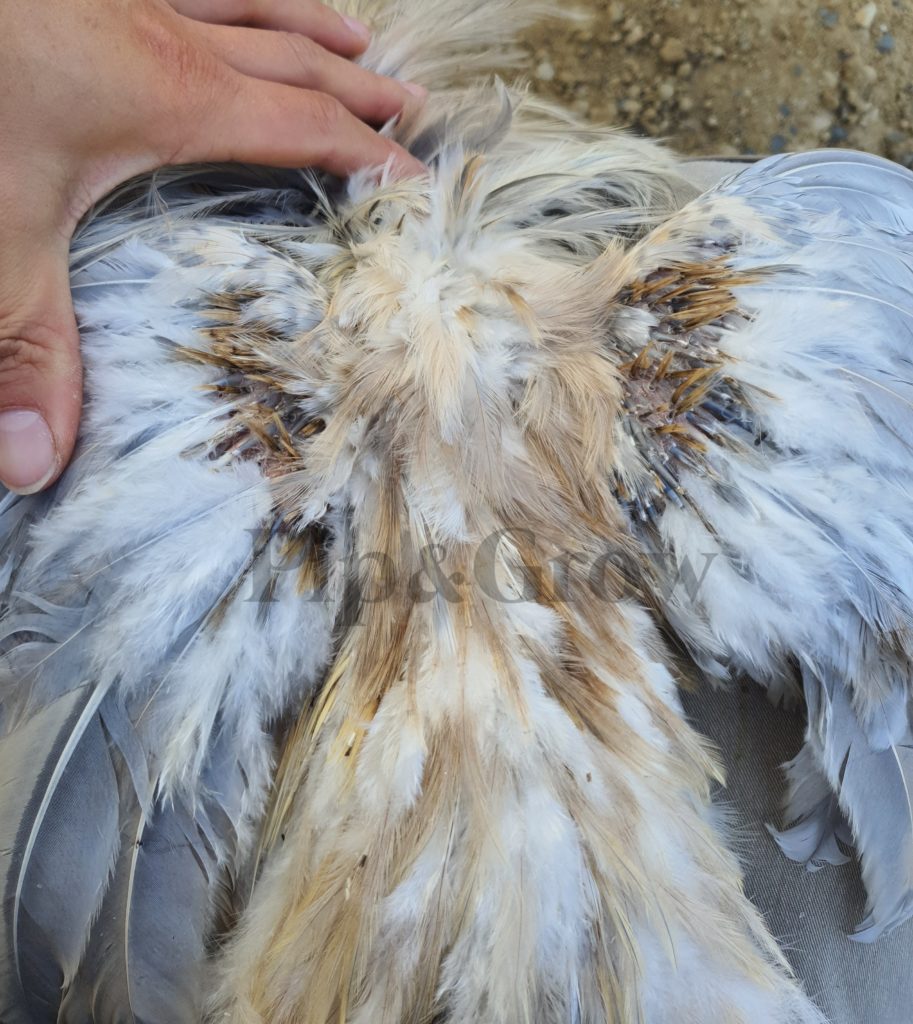
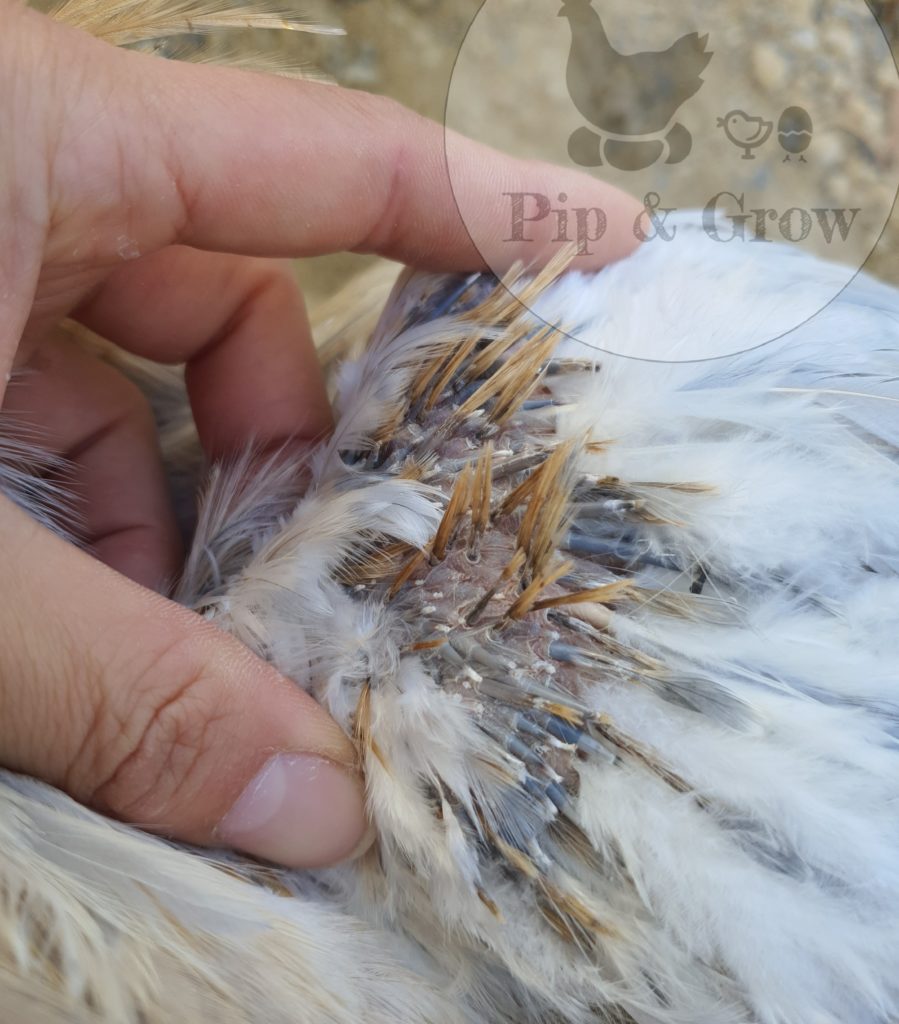
Therefore, breeding Lavender and Porcelain varieties demands meticulous attention to genetic backgrounds and a readiness to reset at least three generations. Sadly, this young lad not only grappled with feather issues but also suffered from a heart condition that we suspect is linked to his genetics. He experienced breathing difficulties when stressed or pursued. We had high hopes for him, as we hatched him from a batch of eggs obtained from a reputable Pekin breeder, with the intention of introducing new color genetics into our millefleur line. However, it appears that this plan will have to be put on hold for the time being.
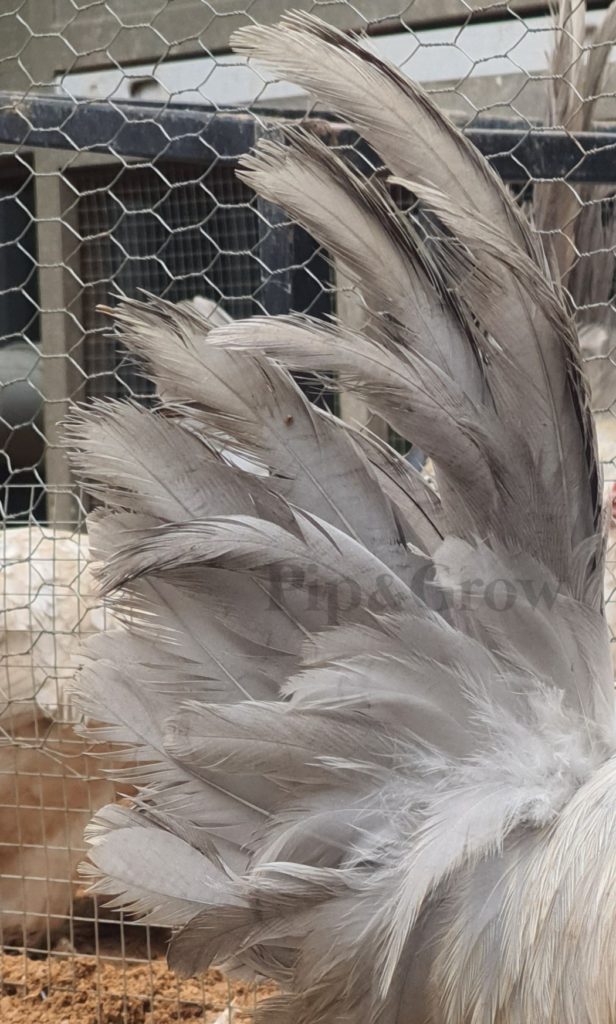
Another manifestation of Lavender-associated feather faults is tail shredding, where tail feathers exhibit a frayed appearance. Unfortunately, this issue is commonly observed in photos of breeding birds within the fertile egg market in particular lavender Araucana, Belgian D’Uccle Porcelain. We urge caution and recommend requesting close-up photos of breeders and inspecting roosters’ tail feathers prior to making a purchase. Not by the photo of the eggs.
We have no intention of casting blame or stirring up trouble, hence we will refrain from disclosing any details about the breeder. However, after careful consideration, we’ve decided to share some images purely for educational purposes. We believe that by sharing our experiences, we can collectively enhance our knowledge and understanding of these remarkable birds.
Reference : https://onceuponachicken.com/inheritance-of-lavender-in…/
